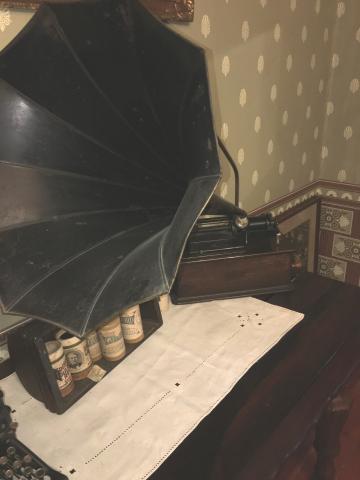This phonograph was a popular music device found in many homes such as the Grangers during the later 1800s and early 1900s. The Edison Speaking Phonography Company created the phonograph in 1877 as a way for people to listen to music around their home. The phonograph was also popular with soldiers in the army as the music reminded them of home. The device works with a tinfoil-coated cylinder that records sound and can be replayed. Several years later, the invention was improved on by the Alexander Graham Bell in 1886, making the cylinder out of removable cardboard that was coated with mineral wax instead of tinfoil which created a clearer and better sound. Content can be used with the following standards: 3rd grade SS 3.28 Cultural Contributions in a lesson on entertainment the late 1800s. For any use other than instructional resources, please check with the organization that owns this item regarding copyright restrictions.
2018.023.003 [Phonograph]
Legal Status
Ownership of this resource is held by the Granger House Victorian Museum and has been provided here for educational purposes only, specifically for use in the Iowa Museum Association's "Teaching Iowa History" project. It may not be downloaded, reproduced or distributed in any format without written permission from the Rights Holder. For information on U.S. and International copyright laws, consult an attorney.

